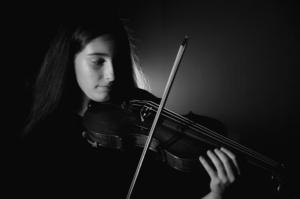How Electric Violinists Are Changing the Music Scene
The music world is experiencing an exciting transformation, thanks to the rise of electric violinists who are blending classical techniques with modern innovation. These artists are redefining what the violin can do, incorporating electronic effects, loop pedals, and genre-crossing performances that captivate audiences of all ages. One standout trend is the growing recognition of the Electric Violinist Female—a dynamic presence in both live shows and digital platforms, bringing fresh energy and visibility to the instrument. As more musicians embrace the electric violin, the boundaries of traditional music continue to expand, making space for creativity that resonates across cultures and generations.
A New Take on a Classic Instrument
Unlike acoustic violins, electric violins can be amplified, modified with effects pedals, and played in high-energy settings without feedback. This has opened doors for violinists to perform at festivals, clubs, and arenas—venues that were once off-limits to such instruments. The sleek design of electric violins also allows for greater mobility and stage presence, enabling performers to move and engage with their audience like never before.
Genre-Blending and Innovation
 One of the most significant impacts electric violinists have had is on the fusion of genres. Artists are now mixing classical elements with electronic beats, jazz riffs, or rock guitar distortion. This fusion not only attracts fans from diverse musical tastes but also introduces the violin to younger generations who may not typically connect with traditional symphonies. As a result, the instrument is enjoying a cultural resurgence, free from its former constraints.
One of the most significant impacts electric violinists have had is on the fusion of genres. Artists are now mixing classical elements with electronic beats, jazz riffs, or rock guitar distortion. This fusion not only attracts fans from diverse musical tastes but also introduces the violin to younger generations who may not typically connect with traditional symphonies. As a result, the instrument is enjoying a cultural resurgence, free from its former constraints.
Social Media and Independent Reach
The rise of platforms like Instagram, YouTube, and TikTok has given electric violinists a direct line to global audiences. Viral videos and livestreams showcase everything from solo covers of chart-topping hits to original compositions and dynamic collaborations. These platforms allow artists to bypass traditional gatekeepers in the music industry and build their careers independently, often gaining brand deals, bookings, and record offers through sheer online presence.
Changing Perceptions of Classical Training

Electric violinists are also transforming how people view classical training. By integrating formal techniques with contemporary performance styles, they demonstrate that classical education doesn’t have to be rigid or outdated. This shift is inspiring a new wave of musicians who see the value in mastering their craft while also exploring innovative forms of expression.
Electric violinists are not just adapting to the modern music scene—they’re actively reshaping it. Through their genre-crossing compositions, tech-savvy performances, and boundary-pushing artistry, they are proving that the violin can be as powerful and relevant today as any electric guitar or synthesizer. In doing so, they are breathing new life into an ancient instrument and ensuring its place in the future of music

